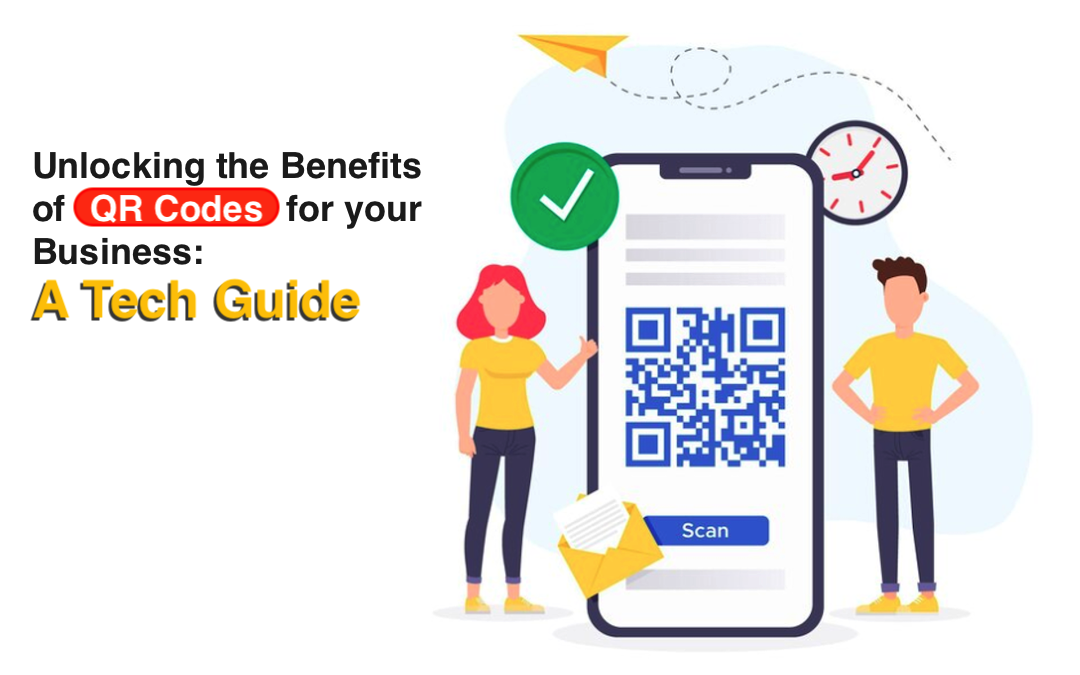
In the ever-evolving landscape of digital marketing, YouTube has emerged as a powerhouse for reaching diverse audiences. One innovative tool that marketers have increasingly integrated into their YouTube campaigns is QR codes. By leveraging the unique capabilities of QR codes, brands can enhance viewer engagement, drive traffic, and ultimately achieve their marketing goals. In this blog, we will delve into real-world examples of successful YouTube campaigns that effectively used QR codes, exploring the advantages, disadvantages, and their importance in today's marketing environment.
The Power of QR Codes in YouTube Campaigns
QR codes, or Quick Response codes, are matrix barcodes that can be scanned using a smartphone or tablet to access information quickly. They have become a valuable asset in marketing, providing a seamless bridge between offline and online media. Let's explore how some brands have harnessed the power of QR codes in their YouTube campaigns.
Case Study 1: Starbucks – A Digital Coffee Experience
Campaign Overview: Starbucks launched a YouTube campaign to promote its new line of cold brews. The campaign featured engaging videos showcasing the making of these drinks and included QR codes at the end of each video.
Execution: The QR codes directed viewers to a dedicated landing page where they could learn more about the products, locate the nearest Starbucks store, and even receive a discount coupon. Starbucks used a QR code generator to create unique codes for each video, ensuring easy tracking of engagement metrics.
Results: The use of QR codes in this campaign resulted in a 25% increase in website traffic and a significant uptick in in-store visits. The campaign's success highlighted the effectiveness of integrating QR codes with compelling video content to drive customer actions.
Case Study 2: Nike – Unlocking Exclusive Content
Campaign Overview: Nike's YouTube campaign for its new sneaker line utilized QR codes to create a buzz and offer exclusive content to viewers.
Execution: Each video in the campaign included a QR code that, when scanned, provided access to behind-the-scenes footage, interviews with designers, and early-bird purchase opportunities. Nike used a QR code to ensure each code was trackable.
Results: The campaign not only boosted viewer engagement but also increased sales of the new sneakers by 30%. The exclusive content available through QR codes created a sense of urgency and exclusivity, driving consumer interest and action.
Case Study 3: Toyota – Enhancing the Test Drive Experience
Campaign Overview: Toyota's YouTube campaign for a new car model aimed to enhance the test drive experience using QR codes.
Execution: Videos showcasing the car's features included QR codes that allowed viewers to book a test drive directly. Additionally, scanning the QR code provided a virtual test drive experience using augmented reality. Toyota used QR codes that integrated seamlessly with their digital platform.
Results: This innovative use of QR codes led to a 40% increase in test drive bookings and provided a unique, immersive experience for potential buyers. The campaign demonstrated the versatility of QR codes in offering interactive and value-added experiences.
Advantages of Using QR Codes in YouTube Campaigns
- Enhanced Engagement: QR codes offer a direct call-to-action, encouraging viewers to interact with the content beyond just watching a video. This can lead to higher engagement rates and more meaningful interactions with the brand.
- Seamless Integration: The use of QR codes allows for a seamless transition from video content to additional online resources, such as websites, apps, or social media platforms. This can streamline the customer journey and reduce friction.
- Trackable Metrics: QR codes can be easily tracked, providing valuable insights into user behavior and campaign performance. This data can inform future marketing strategies and improve ROI.
- Cost-Effective: Generating QR codes is relatively inexpensive, making them an accessible tool for businesses of all sizes. They can be easily incorporated into existing marketing materials without significant additional costs.
- Versatility: QR codes can be used in various ways, from directing users to a landing page to offering exclusive content or discounts. This versatility makes them a valuable tool for creative marketing strategies.
Disadvantages of Using QR Codes in YouTube Campaigns
- Scanning Requirement: For a QR code to be effective, viewers need to scan it with their devices. This requires them to have a QR code scanner app or built-in functionality, which not all users may have or be willing to use.
- Design Constraints: Integrating QR codes into video content requires careful consideration of design and placement to ensure they are easily scannable and do not disrupt the viewing experience.
- User Awareness: Not all users are familiar with QR codes or how to use them. Educating viewers on scanning and the benefits of doing so can be a hurdle.
- Dependence on Technology: QR codes rely on smartphones and internet access, which can be limiting in areas with poor connectivity or for users without access to the latest devices.
- Potential for Misuse: If not implemented correctly, QR codes can lead to a poor user experience, such as directing to irrelevant or broken links. Ensuring quality control is essential.
Importance of QR Codes in the Current Marketing Landscape
The integration of QR codes in marketing strategies has become increasingly important. The use of QR codes offers a dynamic way to engage audiences, bridge offline and online interactions, and provide a richer user experience.
Here are some reasons why QR codes are crucial in the current scenario:
- Consumer Behavior: With the widespread adoption of smartphones, consumers are more comfortable with digital interactions. QR codes cater to this behavior by providing instant access to information and services.
- Pandemic Adaptation: The COVID-19 pandemic has accelerated the need for contactless solutions. QR codes offer a safe and hygienic way for consumers to interact with brands without physical contact.
- Omni-Channel Integration: QR codes facilitate a seamless omni-channel experience, allowing brands to connect with consumers across various touchpoints and enhance their overall journey.
- Data-Driven Insights: The ability to track and analyze the performance of QR codes provides marketers with valuable data, enabling more targeted and effective campaigns.
- Innovation and Engagement: As competition in the digital space intensifies, the innovative use of QR codes can help brands stand out and capture consumer attention in new and exciting ways.
Conclusion
The successful integration of QR codes into YouTube campaigns has proven to be a powerful tool for marketers. By enhancing engagement, providing seamless transitions to additional content, and offering trackable metrics, QR codes can significantly boost the effectiveness of digital marketing efforts.
However, it is essential to consider the potential disadvantages and ensure proper implementation to maximize their benefits. As consumer behavior continues to evolve, the use of QR codes will remain a crucial component of innovative and engaging marketing strategies. Brands that effectively leverage QR codes will be well-positioned to achieve their marketing goals and drive meaningful interactions with their audiences.
Share this post
Leave a comment
All comments are moderated. Spammy and bot submitted comments are deleted. Please submit the comments that are helpful to others, and we'll approve your comments. A comment that includes outbound link will only be approved if the content is relevant to the topic, and has some value to our readers.



Comments (0)
No comment